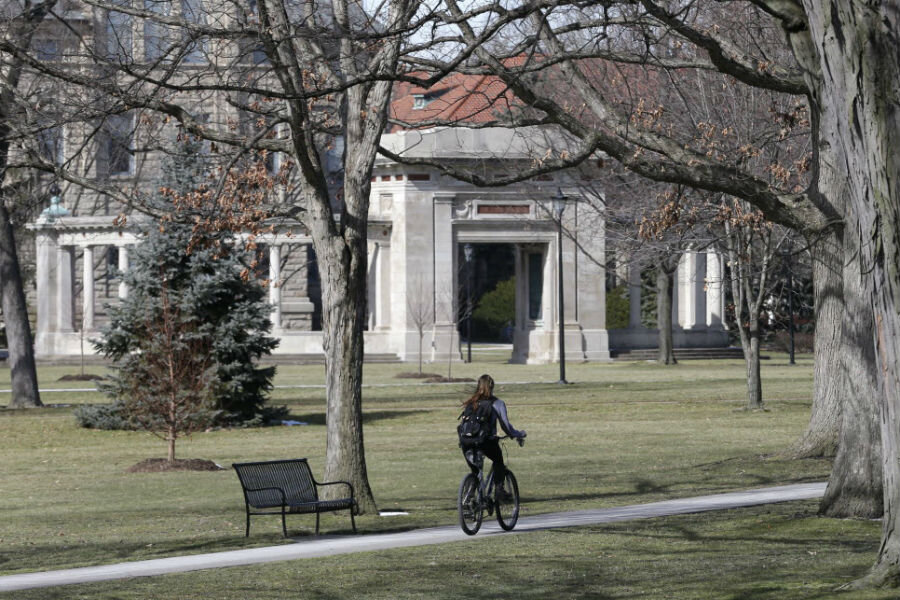Freshman banking 101: Checking accounts
Loading...
The road to a college degree isn’t just about learning in the classroom. It’s about learning life skills, too, like managing your money.
If you’re off to college and just opened your first checking account, you’ll enjoy the convenience it offers. Checking accounts can be handy for paying the monthly rent and for everyday expenses like groceries and all the ramen noodles you can eat. But with easy access to your money comes responsibility, like avoiding expensive bank fees when your account balance dips below zero.
Here’s a look at some account basics and some best practices to minimize your costs and maximize your benefits when using your first checking account.
How a checking account works
A checking account at a financial institution allows you to put money in and then take it out whenever you want.
As the name suggests, the account can come with checks, which you write to buy goods or services or make payments. But most accounts also come with debit and ATM cards, which also provide access to your cash.
Many banks also offer the conveniences of online and mobile banking, such as peer-to-peer payments.
Tip 1: Avoid overdraft fees
Checking accounts can be fraught with fees. Most financial institutions, for example, charge a monthly fee just for maintaining your account, though you can also find banks and credit unions that don’t charge. Some banks offer ways to waive fees, such as by keeping a minimum balance.
Among the steepest checking account charges are overdraft fees, which banks can charge when you don’t have enough money in your account to cover a transaction. The median bank overdraft fee is $34, according to the Consumer Financial Protection Bureau.
Some banks cap the overdraft fees they charge you in a single day to just one, even if you have several overdrafts. With others, if you keep making transactions after your balance drops below zero, you can rack up overdraft fees of $200 or more in the same day.
Living on a college budget is hard enough; don’t throw your money away on expensive bank fees if you can avoid them. Know your bank’s policy on overdrafts, and check for ways to minimize overdraft fees or to prevent them. For example, some banks don’t charge for overdrafts if a checking account is overdrawn by $5 or less at the end of the business day.
Some banks won’t allow you to overdraw at all, but you’ll incur a nonsufficient funds fee if a transaction is declined. A nonsufficient funds fee can run about $25 to $30, but the check recipient can also charge for the returned check, making for a pricey double whammy.
Banks also offer overdraft protection, which triggers a transfer from a linked account, such as a savings account or credit card, when an overdraft occurs. A transfer usually costs around $10 or $12.
You can opt out of overdraft programs, but you risk incurring a nonsufficient funds fee. The best advice is obvious: Don’t spend money you don’t have.
Tip 2: Monitor account balances
To avoid spending what you can’t cover, monitor your checking account balance regularly. If your checking account offers them, take advantage of text alerts or online or mobile banking to keep real-time tabs on your balance.
Tip 3: Use budgeting tools
Of course, budgeting is a great way to take command of your finances. Tally up your account spending and deposits and keep them in line.
Check if your bank offers budgeting and savings tools. Simple, an online bank, offers customers a Safe-to-Spend tool, which factors in your bills and savings goals to show how much you can afford to spend without going into the red.
More features to use to your advantage
There are many best practices to use when opening a checking account. Here are three top features to make your checking account experience a positive one:
Interest checking. Checking accounts are known for paying low interest rates, hovering at most major banks around 0%. But some online-only banks offer high-interest checking with attractive annual percentage yields. With one of these, your account doesn’t just hold money, it can grow it.
Accessible ATM network. If having easy access to an ATM is important, you’ll want to go with a checking account from a bank with a large number of ATMs. Use your bank’s ATMs or ATMs in its network. Otherwise, you’ll risk out-of-network ATM fees, which can add up. Look for a bank that refunds ATM fees or doesn’t charge for out-of-network use.
Mobile banking. If you’re the type who can’t do without your smartphone, consider the advantages of mobile banking, which allows you to take care of banking business anytime and anywhere, so long as you have an internet connection.
Among the most convenient time-saver features is the ability to deposit checks into your account with a smartphone camera. And with peer-to-peer payments, you can settle up tabs or bills on your smartphone simply by linking peer-to-peer service to your bank account. That’s using technology to your advantage.
Juan Castillo is a staff writer at NerdWallet, a personal finance website. Email: jcastillo@nerdwallet.com. Twitter: @JCastilloNerd.
This story originally appeared on NerdWallet.





